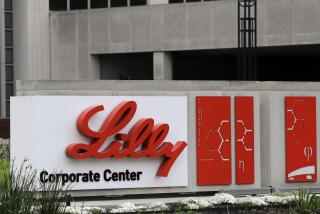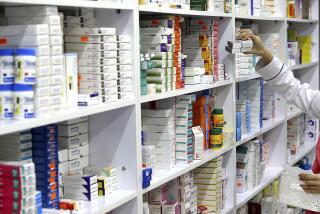Medicine you can’t trust
- Share via
When you take medicine, there’s a good chance you’re getting a dose of modern global business practices as well. Eighty percent of the active ingredients in the medications that Americans use are produced overseas. In a single drug, it’s quite possible that the individual components came from several countries and were assembled in yet another before arriving on U.S. shores.
This diffuse manufacturing operation increases the opportunities for chicanery, which can include too-low amounts of active ingredients or substitution of different ingredients as well as adulterated ones. In some countries, 30% to 50% of medications are counterfeit — unlicensed knockoffs or imitations of real drugs. A new study published in the June 2012 edition of the Lancet found that about a third of the anti-malaria drugs administered in Southeast Asia and sub-Saharan Africa were either counterfeit or so poorly made that they were ineffective.
In the United States, the problem of counterfeit drugs is still relatively rare, but growing. In February, a counterfeit version of the cancer drug Avastin that contained none of the active ingredient was purchased online by various medical groups that were ignorant of the fakery. On Tuesday, the U.S. Food and Drug Administration posted a warning about a counterfeit version of Adderall that contains painkilling ingredients instead of those for attention deficit hyperactivity disorder. During the last year there also have been cases of counterfeit weight-loss drugs, anti-flu medications, Viagra, Vicodin and morning-after pills. Most counterfeits are purchased online.
The FDA is responding with plans to globalize its own operations by working out mutual inspection pacts with other nations and inspecting imports based on the likelihood that a particular drug has been tampered with. But the agency lacks the authority to adopt some sensible measures. When it finds a batch of counterfeits, it cannot destroy the medication without a lengthy legal procedure. Instead, most of the counterfeits end up back at sea, and their makers get to try their luck at other ports.
The FDA must be allowed to detain counterfeit pharmaceuticals until it can take the required steps to have them destroyed. It also needs the ability to require drug importers to track and trace all medications throughout the manufacturing process. Finally, there should be tougher sentencing for producing or selling phony drugs. At this point, FDA Commissioner Margaret Hamburg points out, there are harsher penalties for faking a designer purse than for faking a life-saving drug.
Parts of all three remedies are contained in two FDA reauthorization bills. The Senate version passed last week and included a steep increase in the penalty for counterfeiting drugs — to up to 20 years in prison or a $4 million fine — but left the fate of track-and-trace authority uncertain. The House version passed Wednesday. Congress should bring back the tracking language as it reconciles the two versions, retaining the strongest elements of both.






